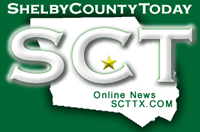
The Posts Oak Savanna is characterized by widely spaced oaks with a native grass and wildflower understory.
May 27, 2025 - No one should garden in an area without knowing what ecoregion they are in and what geological and meteorological events shaped the surrounding landscape. In the case of East Texas, we need to be deeply familiar with the both the Pineywoods and Post Oak Savanna ecoregions and the native plant palette of each.
Though the Post Oak Savanna is defined as stretching from the northeast part of the state down into the Brazos River valley, its influence reaches much farther than its boundaries suggest. While the western edge of Smith County marks the official eastern border of the Post Oak Savanna, the plants, soils, and character of this prairie-and-woodland blend finger all the way into Deep East Texas.
The Post Oak Savanna was historically a patchwork of open grasslands and widely spaced trees, mainly post oaks and blackjack oaks. These scattered trees allowed enough sunlight to reach the ground to support a diverse understory of native grasses and wildflowers. Fires, naturally occurring or set by indigenous people, played a key role in maintaining this open structure. Without fire, woody plants like yaupon, elm, and red cedar begin to crowd out the prairie grasses, shifting the ecosystem from open savanna to closed canopy forests.
This mosaic of sun and shade was one of Texas’s richest habitats. The soil wasn’t particularly fertile. In fact, it was often sandy, acidic, and prone to drought. But the plants that evolved there were well suited to the challenge. Deep-rooted warm-season grasses like little bluestem, Indiangrass, and switchgrass formed the structure of the prairie, holding soil in place and enduring dry spells. These grasses were interspersed with perennials like goldenrod, coneflower, gaura, and liatris that colored the landscape and nourished a plethora of pollinators.
Even in the Pineywoods east of Smith County you’ll still find echoes of the Post Oak Savanna in fence rows, pasture edges, and other neglected places. A few old post oaks or perhaps a small patch of bluestem or a stand of roughstem rosinweed can serve as reminders of the ecosystem that once reigned here. The presence of these plants suggests that the natural conditions supporting the Post Oak Savanna still linger, waiting to be acknowledged and nurtured.
For gardeners, this savanna should be an inspiration. Instead of battling to grow foreign plants that demand water and attention, we can look to the savanna as a model for Earth-Kind gardening. By choosing species such as native oaks, cedar elm, yaupon holly, possumhaw holly, and American beautyberry that evolved with our climate, we can create landscapes that are both beautiful and sustainable. These are not gardens to be irrigated and sprayed, but living systems that support birds, bees, and butterflies while conserving water and other precious resources.
Even small-scale efforts can make a difference. Adding a pocket prairie filled with bluestem and baptisia, planting a few native oaks, or simply allowing native grasses and wildflowers to thrive along a fence row can help reintroduce this important ecosystem to our everyday spaces. It’s not about recreating historical savannas to perfection, it’s about honoring the land’s natural history and purpose.
The Post Oak Savanna is fading in most places, but it’s not completely gone. As gardeners, we should embrace that spirit, planting with purpose, and watching our landscapes grow into something uniquely Texan.
Greg Grant, Ph.D., is the Smith County horticulturist and Master Gardener coordinator for the Texas A&M AgriLife Extension Service. He is the author of Texas Fruit and Vegetable Gardening, Texas Home Landscaping, Heirloom Gardening in the South, and The Rose Rustlers. You can read his “Greg’s Ramblings” blog at arborgate.com, read his “In Greg’s Garden” in each issue of Texas Gardener magazine (texasgardener.com), or follow him on Facebook at “Greg Grant Gardens” or “Rebel Eloy Emanis Wildlife Sanctuary.” More science-based lawn and gardening information from the Texas A&M AgriLife Extension Service can be found at aggieturf.tamu.edu and aggie-horticulture.tamu.edu.









